A few days ago I experimented with the Waifu2x image scaler to identify a small car in the background of a Family Album Treasure AE86. Then I remembered I recently came across a black and white photo of a mystery Carina in Okayama. The photo is dated as Showa 58, which is 1983 and thus the Carina must have been brand new!
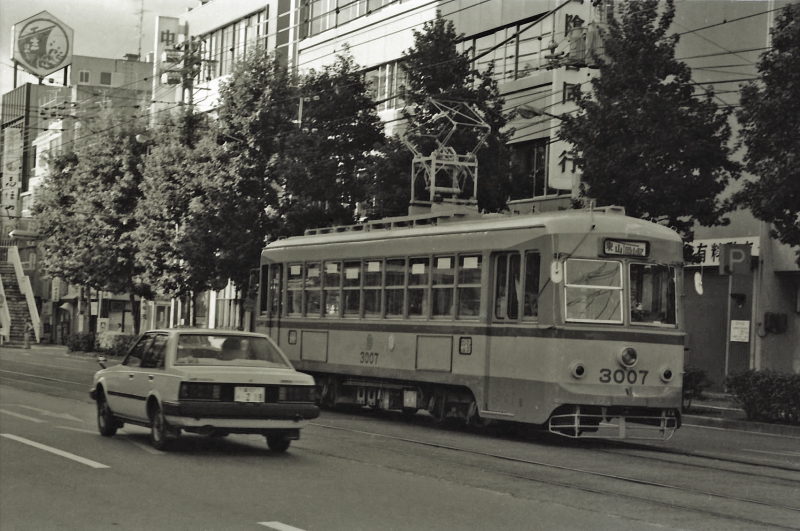
AI image upscalers
As you can see, due to the slight motion blur, the Carina does not have any readable badges to properly identify it. Also, the photo is a bit grainy, which also makes it difficult to read. So let’s try to improve things with various AI image upscalers and see if we can get anything readable from those!
Commercial upscalers (Stable Diffusion)
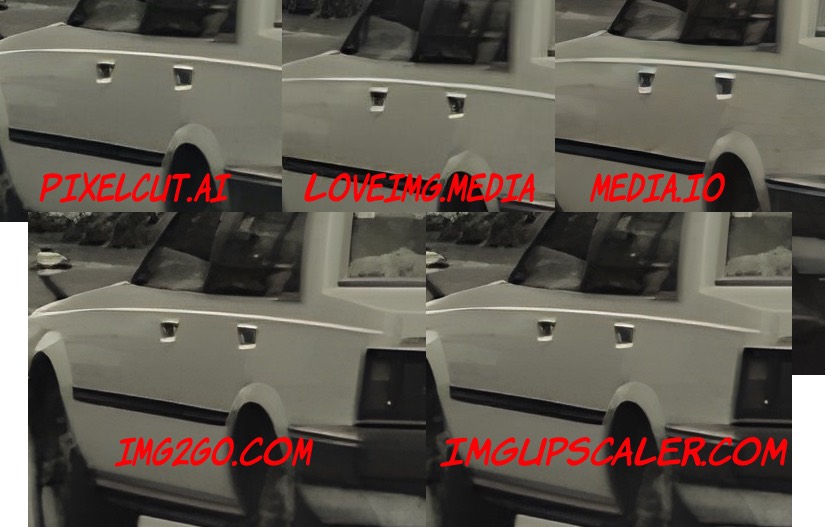
I tried various commercial image upscalers, but found most of them use the same method to scale up the image. You may wonder how I noticed this then. Well, as you can see in the image above they all have the same artefacts. They all have the weird triangular door handles, the same kink in the rear wheel arch and the same plastic look. Probably these websites all make use of the same backend service. The Stable Diffusion API by AWS is one such backend service that’s available.
Open-source Waifu2x
Waifu2x is an open-source AI image upscaler. It actually originated from people training an open-source AI to upscale anime. That’s why it has multiple trained AI models to suit animation and photo separately. I tried the open-source Waifu2x software with the photo AI and I’m quite happy with the performance of it. I have combined Waifu2x and some commercial upscale in one picture. Commercial upscaler is top and Waifu2x is bottom:
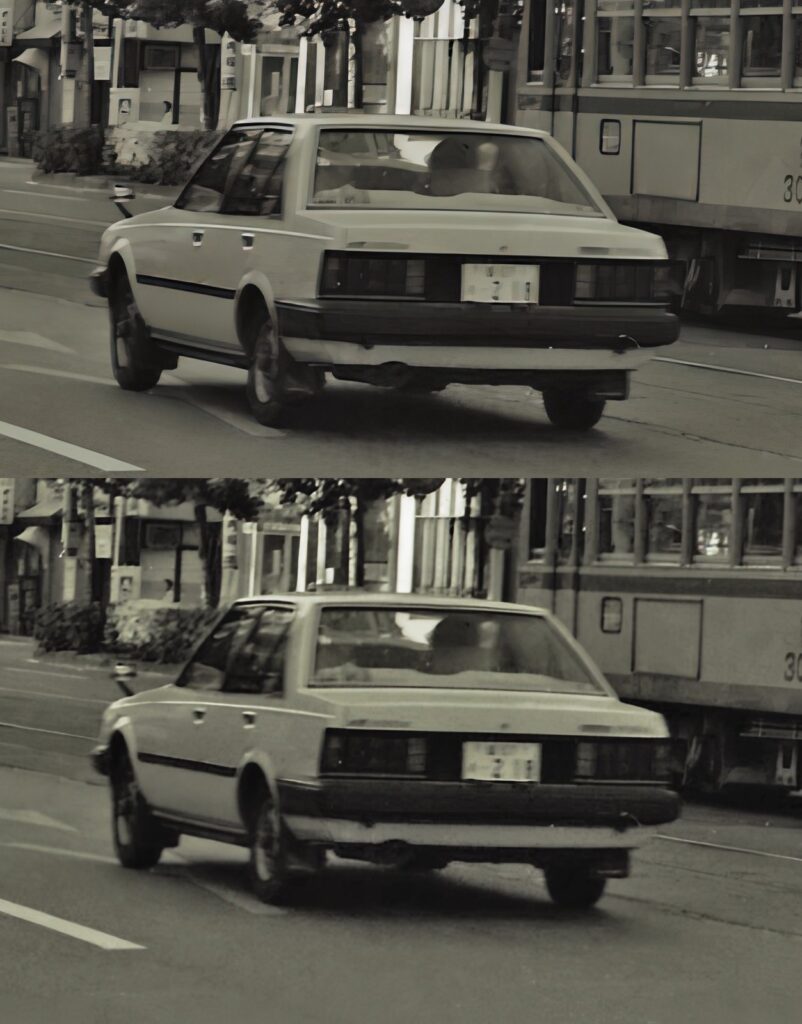
As you can see, the commercial upscaler is much smoother and has better contrast. Even after I adjusted the contrast, the commercial upscaler looks more pleasing. However, just as I concluded with the grill of the AE86, the commercial upscaler does destroy some details and looks very plastic. I find the license plate on the Waifu2x images easier to read and overall much more pleasing to look at.
Unfortunately, neither of the upscalers was able to improve the readability of the badges. Not even the Toyota and Carina badges have become readable. The commercial upscaler even just made it a smooth grey blur. This means we will have to identify the Carina ourselves by simple clues in the photo.
Identification
The first clue in the photo is the angle of the left rear wheel. As it is angled due to the uneven road, it indicates a solid rear axle. This means we can cross off any trim level with independent rear suspension: the ST / SG trim levels with 1800 EFI (3T-EU) and also the GT trim levels (GT / GT-R / GT-T and GT-TR).
The next clue is the headrests on the rear bench and the black side moulding. These were available on the ST, SG and SE trim levels. Luckily I also host Carinafr.com with most of the Carina brochures online:
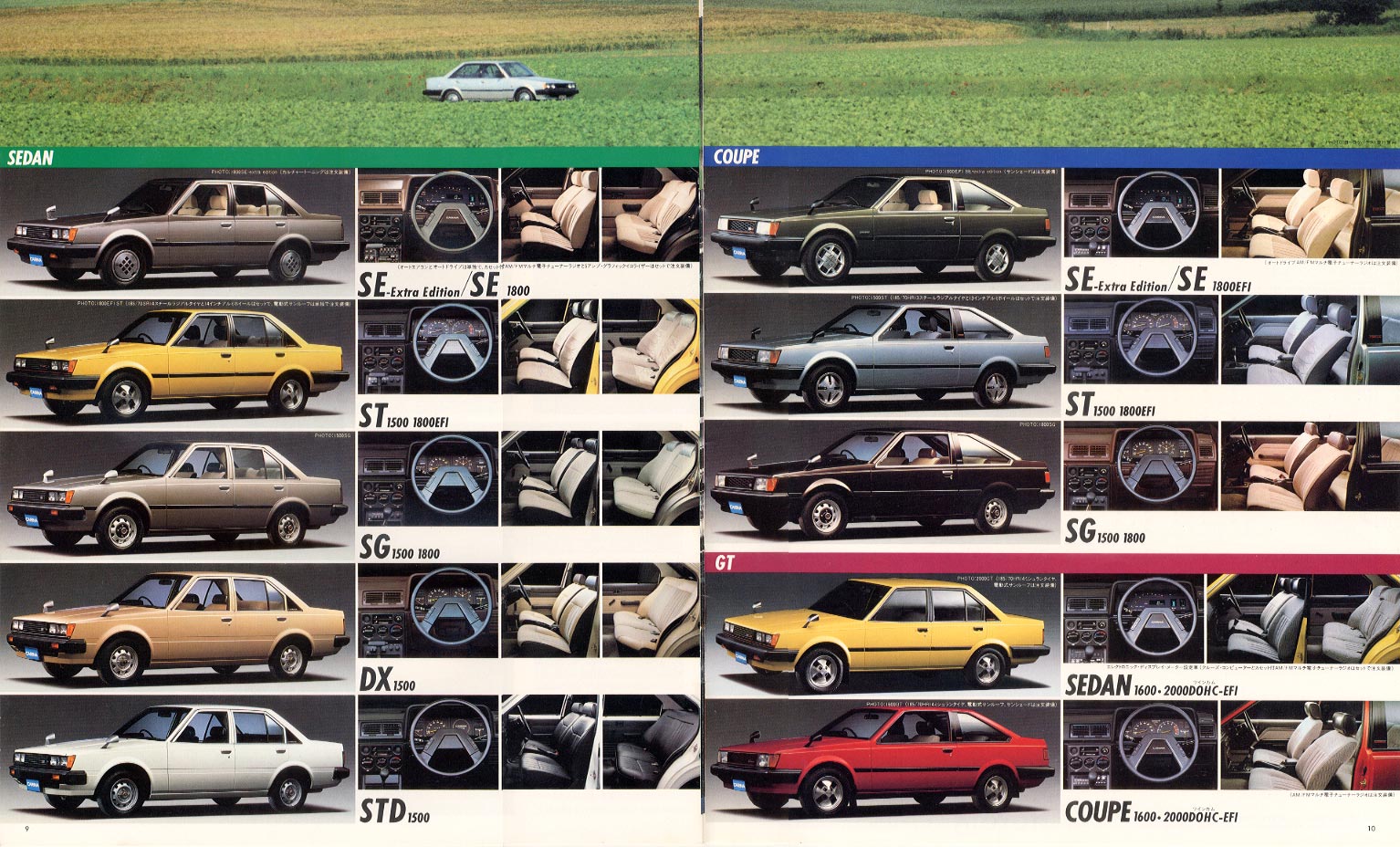
The next clue is the wheels. The SE trim level had very distinct alloy wheels. So we can narrow it down to the ST and SG trim levels.
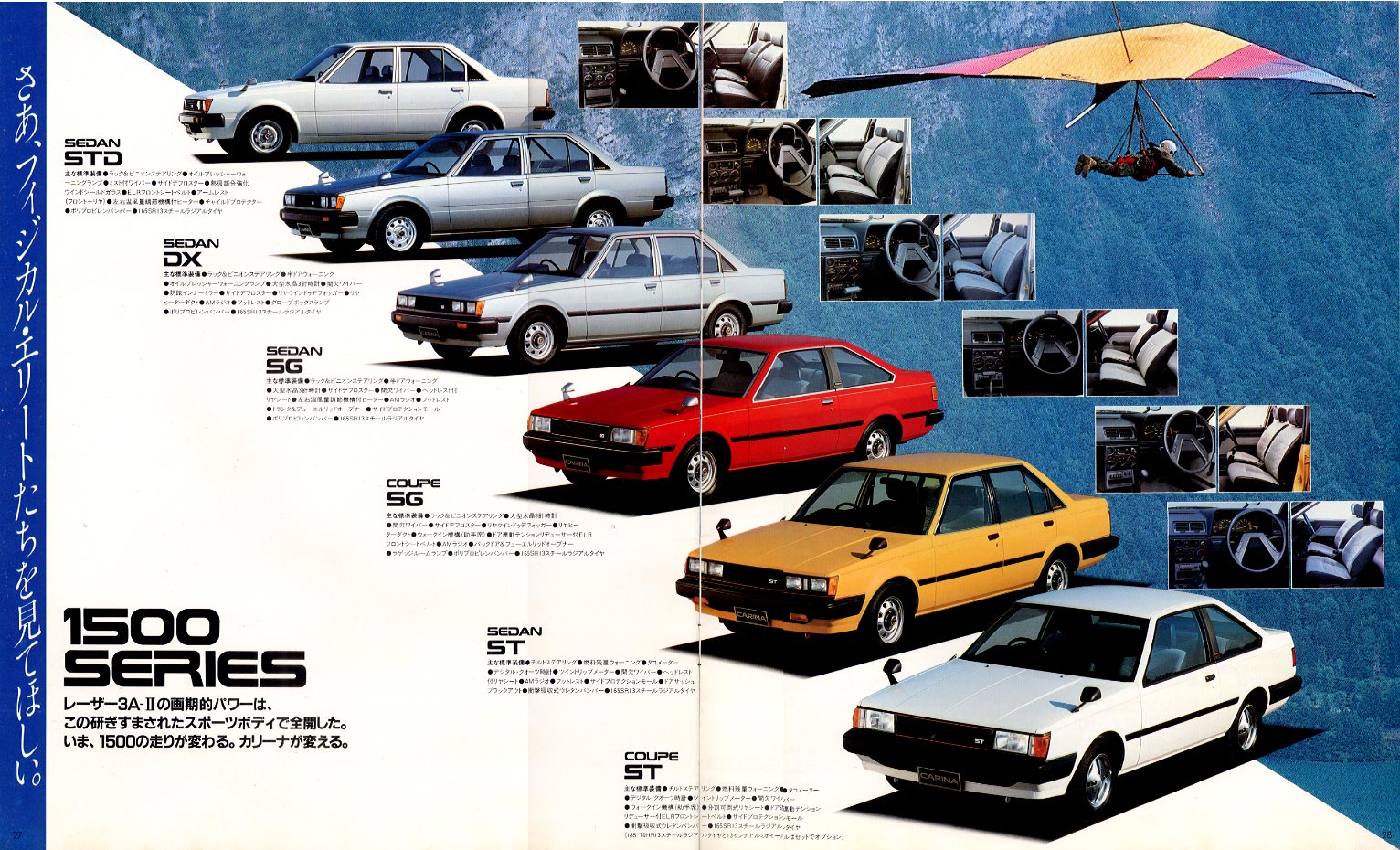
The final clue is the bumpers. The SG features short bumpers, while the ST features longer bumpers that reach till the wheel arches. That makes this Carina an ST. As the ST only had the choice between the 3T-EU and 3A-U engines, this narrows it down to a 3A-U-powered ST!
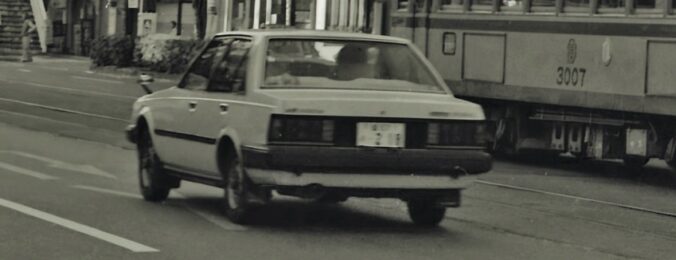
Leave a Reply